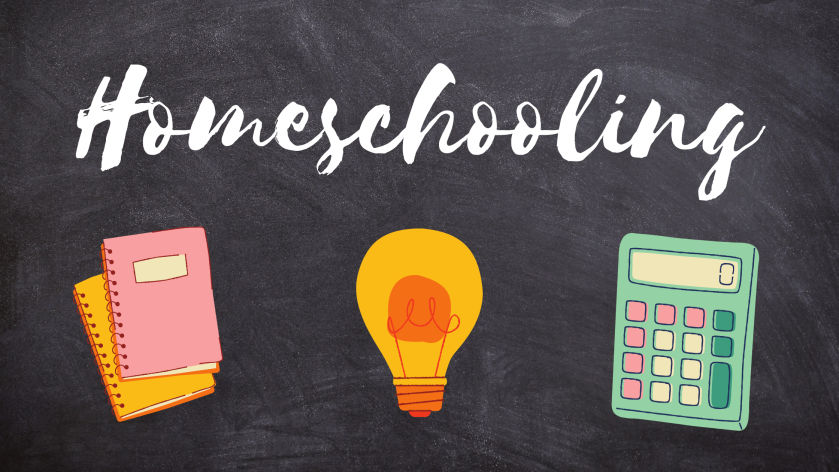What we’re doing this year, what we’ve changed, and what we’ve added
This year’s plan…
This year, I have a sophomore, freshman, 7th grader, and 2nd grader (excuse me a minute, while I go cry into my coffee. When did my babies get so big??).
I feel like we had a pretty good groove last year, despite letting some of our electives (music, art, & typing) slide in the spring. So for the most part, I wanted to stick with the curriculum I’ve been using the last two years.
Sophomore
Language Arts: The Good & the Beautiful High School Level 2
Math: Saxon Algebra 2
Science: Lifepac Grade 10
Bible: Lifepac Grade 10
Spanish: Lifepac Spanish 2
History: Dual Credit with University of the Cumberlands
Art: Dual Credit with University of the Cumberlands
Public Speaking: Dual Credit with University of the Cumberlands
Freshman
Language Arts: The Good & the Beautiful High School Level 1
Math: Saxon Geometry
Science: Lifepac Grade 9
Bible: Lifepac Grade 9
Latin: Memoria Press First Forme Latin
History: The Good & the Beautiful History Year 3
Art: Vincent’s Starry Night & Other Stories
Logic: Classical Academic Press’ Everyday Debate & Logic
7th Grade
Language Arts: The Good & the Beautiful Level 6
Math: Saxon 8/7
Science: The Good & the Beautiful Science Units (Ecosystems, Geology, Chemistry, & Water and Our World)
Bible: Lifepac Grade 7
History: The Good & the Beautiful History Year 3
Art: Vincent’s Starry Night & Other Stories
Logic: Classical Academic Press’ Everyday Debate & Logic
2nd Grade
Language Arts: The Good & the Beautiful Level 2
Math: The Good & the Beautiful Level 2 (this is their old version)
Science: The Good & the Beautiful Science Units (Ecosystems, Geology, Chemistry, & Water and Our World)
Bible: Lifepac Grade 2
History: The Good & the Beautiful History Year 3
Art: Vincent’s Starry Night & Other Stories
Logic: Critical Thinking Co.’s Thinking Skills & Key Concepts, Grade 2
Music: Classic Tunes & Tales
Spanish: Me Gusto!

What we’ve changed…
If you’ve watched closely to what we had done last year, you’ll notice we didn’t change much, just leveled up in each subject. The two main changes are that I’m using a hand-me-down teacher’s book for music and that my oldest is now enrolled in dual credit classes with the local college. This is terrifying, by the way, but I’m assured that he can handle it.
The biggest change will come next year. I’ve decided to walk away from The Good and the Beautiful’s history curriculum. We’ve been supplementing with Oh Freedom for the last two years to make our history approach more diverse, but I’ve decided it’s not a good fit anymore. We’ll complete this year and then switch over to Notgrass. I had been debating on continuing on and at least doing year 4, but with two children doing history as a dual credit, I decided to find something that would work better for my other two children. So the plan, for now, is to start Notgrass Our 50 States with my then 3rd grader and Notgrass Uncle Sam & You with my then 8th grader.

What we’ve added…
The main addition has been Latin for my Freshman an Dual Credit for my sophomore. I have also added a Spanish curriculum from Teachers Pay Teachers, but I honestly don’t know how long I’ll keep up with that.
With my 2nd oldest hitting high school, we wanted to add a foreign language to his schedule. He initially wanted Japanese, but we couldn’t find a good curriculum that wasn’t just Rosetta Stone. So we went with his second choice – Latin. We’re only two weeks in, but I’m really loving Memoria Press’s First Forme Latin. It comes with CD’s, flashcards, a teacher’s manual, & answer key — everything we need for this to be successful! Plus they have 4 levels of Latin, so we can continue for at least 2 years and go beyond that if he chooses.
My oldest student is also probably my most difficult student. Not because he’s not a quick learner, not because he’s not good at his subjects, but because he’s a procrastinator and not a fan of studying. Ha. Typical teenager, right? My hope is that dual credit classes will kick his butt, just a little bit. He’s smart, so I know he can handle the classes. My hope is that they’ll challenge him to buckle down and complete his work on time.
Our closest university offers both online and on-campus classes for high school sophomores, juniors, and seniors. They run on a bi-term schedule, meaning classes only last 8 weeks but still count for a full 3 credit hours. My son will be taking one class per bi-term so he will end the year with 12 credit hours completed. Assuming we do this again for his junior & senior years, he’ll graduate high school with 36 college credit hours. That’s pretty exciting.
The other addition to our week has been adding an elementary Spanish lesson for my 2nd grader. He has been been begging to learn Spanish for awhile, but especially since visiting his great grandparents over the summer (they’re Mexican and speak fluent Spanish & English). Unfortunately, there are not a lot of great elementary foreign language programs. I found something on Teachers Pay Teachers, but I don’t love it, mainly because it’s written by a Spanish teacher for other Spanish teachers and it doesn’t work well for a homeschool mama with only un poco Español under her belt. I have since found a cute looking Spanish curriculum, but it’s currently way outside my budget (especially since adding dual credit classes!), but maybe we’ll give it a try next year.

What does your homeschool look like this year? What are you favorite choices for this school year? Share below in the comments!
Links:
The Good and Beautiful
Saxon
Lifepac
Memoria Press
Critical Thinking Co
Classical Academic Press


























